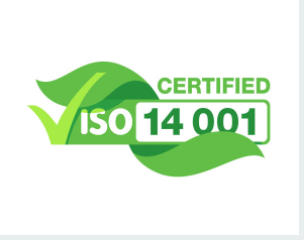Let’s be honest—most people don’t leap out of bed in the morning excited to take a training course on environmental management systems. But here’s the twist: ISO 14001 training isn’t just some dull compliance box to check. It’s the glue that holds your environmental goals together and the fuel that keeps your sustainability engine running.
Whether you’re managing a bustling factory floor or just trying to wrap your head around how emissions reporting connects with daily operations, effective ISO 14001 training isn’t optional. It’s essential. It’s how you turn that stack of policies into action—and avoid watching your efforts crumble under confusion, inconsistency, or plain old burnout.
Wait, What Exactly Is ISO 14001 Training Supposed to Do?
It’s tempting to think of training as just a PowerPoint and a signature sheet. But that’s not the kind of training that drives real change. ISO 14001 training, when done right, helps:
-
Build a shared understanding of environmental goals across all levels of your team
-
Clarify roles, expectations, and responsibilities
-
Translate the jargon-filled language of ISO 14001 into stuff people actually understand
-
Equip staff to spot risks, respond appropriately, and track improvements
Think of it as environmental literacy for your workplace. If people don’t know what the EMS (Environmental Management System) is trying to accomplish—or how they fit into the puzzle—it just becomes background noise. And we all know how well that works. (Hint: it doesn’t.)
Different Roles, Different Lessons
Not everyone needs the same training, and that’s the beauty of it. A maintenance tech doesn’t need to write the EMS manual, but they do need to know how their actions impact compliance. A procurement manager should understand how supplier choices affect environmental aspects.
Effective ISO 14001 training tailors content to the audience. Here’s a quick rundown:
-
Top Management: Focus on strategic commitment, policy, and leadership responsibilities
-
Middle Managers: Emphasize planning, implementation, resource management
-
Operational Staff: Prioritize hands-on procedures, environmental aspects, emergency response
-
Internal Auditors: Teach audit principles, objectivity, and how to evaluate compliance meaningfully
In short, training needs to feel relevant. If it doesn’t connect to someone’s day-to-day work, it won’t stick.
From “I Think I Get It” to “I Can Own This”
Training is a funny thing. It’s easy to deliver information; it’s a whole different game to make it land. That’s where interactive, real-world-based training shines.
Let’s say you’re training staff on waste segregation. You can show them a slide, or you can walk them through the facility, explain what each bin is for, and talk through what happens when something gets tossed in the wrong one.
Which one do you think people remember?
Exactly.
Real-life scenarios, hands-on exercises, and even a bit of friendly Q&A time go a long way. When training feels like something people participate in—not something that’s done to them—the results speak for themselves.
The Danger of “Set It and Forget It” Training
You know what kills an EMS faster than a leak in a waste tank? Static knowledge. Training that’s delivered once and then never touched again.
Environmental regulations change. So do processes, equipment, staff, and risk profiles. If your training program isn’t keeping pace, your compliance probably isn’t either.
That’s why refresher courses, toolbox talks, and short, focused updates matter. It’s not about re-teaching the wheel—it’s about making sure no one forgets how to steer.
The Soft Skills Side of ISO 14001 (Yeah, It’s a Thing)
We tend to focus a lot on technical know-how—aspect registers, compliance matrices, you name it. But effective ISO 14001 training also builds soft skills: communication, accountability, and teamwork.
Think about it. If someone notices a potential spill and doesn’t feel comfortable speaking up, your EMS just took a hit. If a manager doesn’t know how to explain environmental targets in plain language, their team won’t take them seriously.
Good training encourages people to ask questions, take ownership, and collaborate. And that’s when things really start moving in the right direction.
But What If We’re a Small Business?
Great question. ISO 14001 training isn’t just for companies with dedicated environmental departments. If you’ve got people, processes, and impacts—you need training.
That said, small businesses might approach it a little differently. You might:
-
Use in-house meetings instead of formal sessions
-
Share simplified versions of procedures
-
Lean on external trainers or online modules
The goal remains the same: make sure people understand what they need to do, why it matters, and how it fits into your environmental goals. No buzzwords required.
Tools That Make ISO 14001 Training Stick
You don’t need a Hollywood budget to make training effective, but the right tools can help. Think:
-
Visual job aids: Posters, diagrams, quick-reference guides
-
Scenario-based workshops: “What would you do if…?” case studies
-
Digital platforms: Short videos or microlearning modules (especially great for distributed teams)
-
Environmental dashboards: Real-time data visuals that keep progress visible
Also? Don’t underestimate good old-fashioned conversation. Sometimes, a 15-minute chat by the coffee machine about why something matters does more than a 90-minute seminar.
Connecting the Dots with Certification
Here’s the truth: if your team isn’t properly trained, ISO 14001 certification won’t mean much. Auditors can tell when a system is just smoke and mirrors.
Proper training gives life to your documentation. It turns “on paper” compliance into real-world action. It also helps you prove that your EMS isn’t just for show. When an auditor asks a forklift operator what happens during a spill, and they answer with confidence? That’s golden.
Training supports your audit readiness, your risk management, and—let’s face it—your sanity. Because there’s nothing worse than knowing something’s supposed to be happening and realizing no one was actually told how.
The Emotional Payoff: Pride, Ownership, and Clarity
Okay, let’s get a little emotional here. When training is done well, people don’t just “comply”—they care. They understand that their work matters. That protecting the environment isn’t a side project; it’s woven into how they do their jobs.
And that kind of buy-in? It’s a game-changer. It’s the difference between a system that limps along and one that thrives.
So yes, ISO 14001 training is about competence. But it’s also about culture. And that’s where the magic happens.
Final Thoughts (Spoiler: This Isn’t Really the End)
ISO 14001 training isn’t a single event. It’s a rhythm. A living, breathing part of your EMS that keeps everyone informed, engaged, and ready for what comes next.
Whether you’re new to the standard or knee-deep in implementation, investing in real, meaningful training will always pay off. It helps you meet legal requirements, reduce environmental risks, and empower your team.
More importantly? It turns good intentions into lasting impact.
So yeah, you might not jump out of bed excited about it—but by the time the training’s done, you just might stand a little taller, knowing you’re part of something that actually matters.







0 Comments